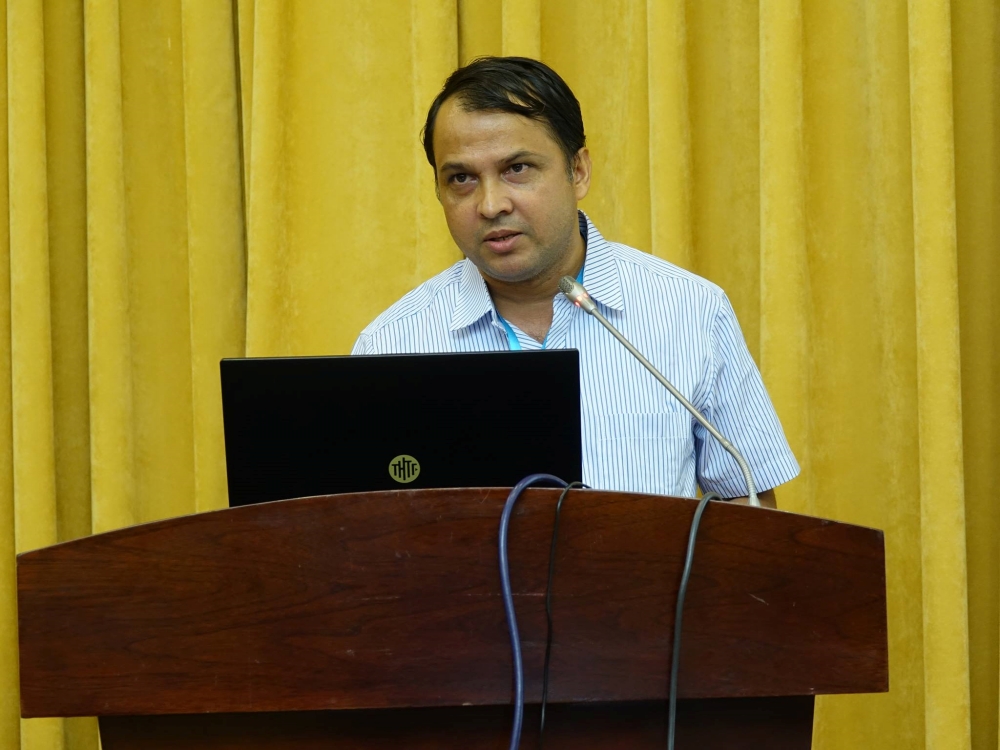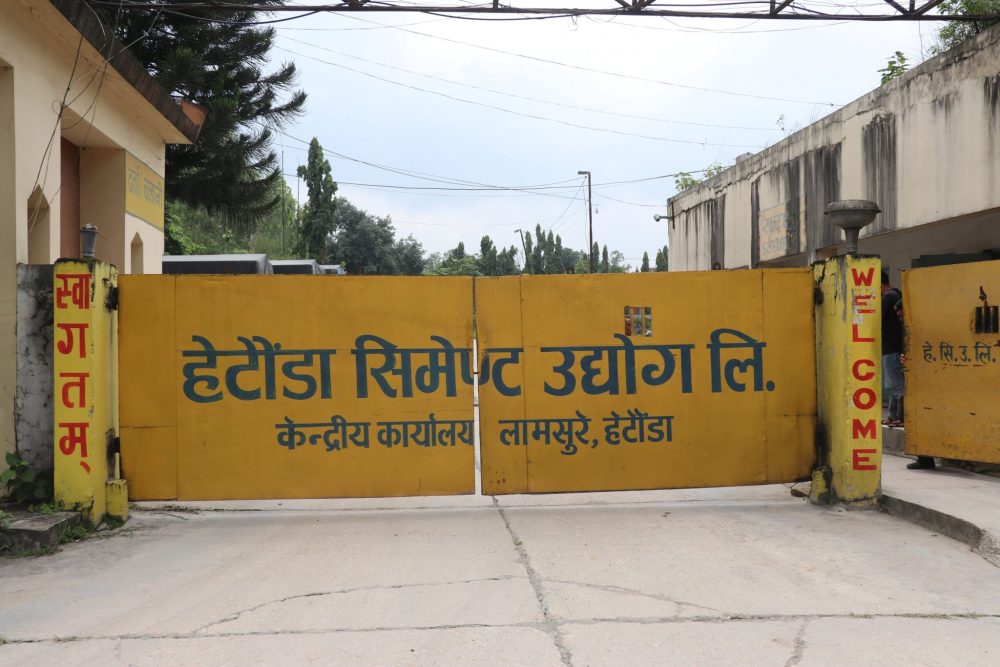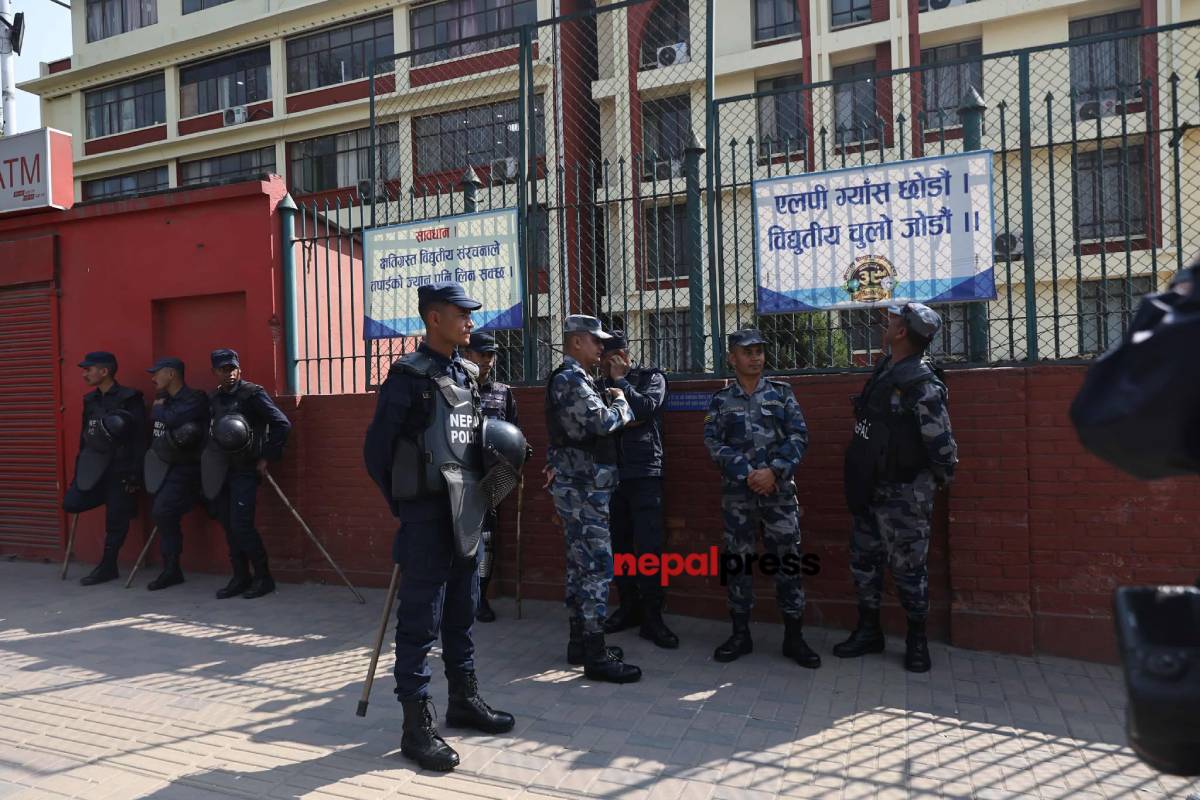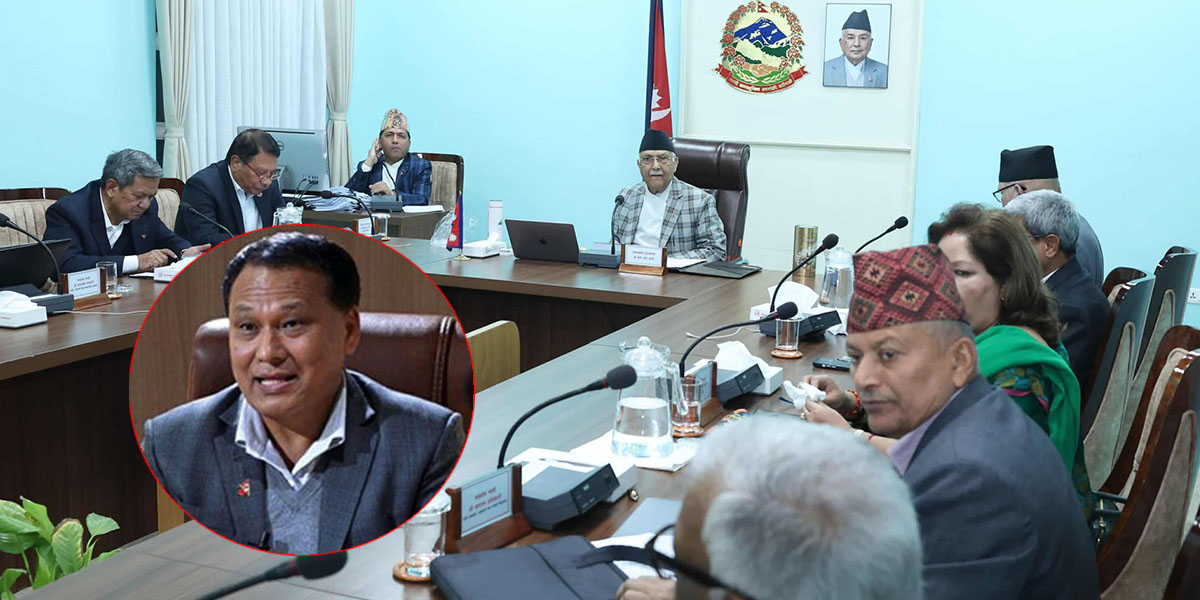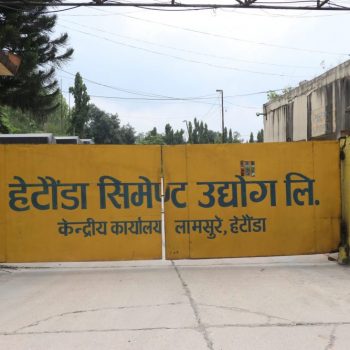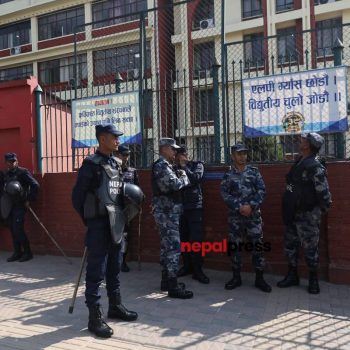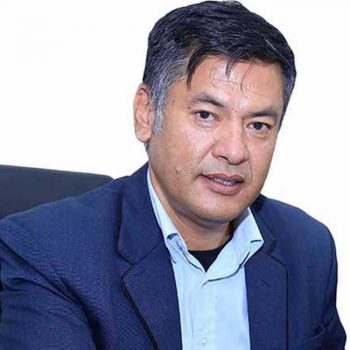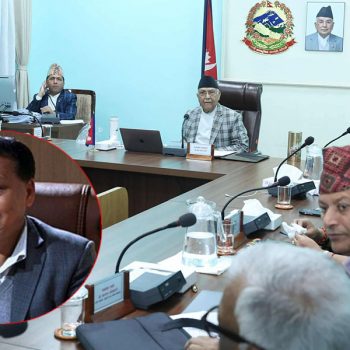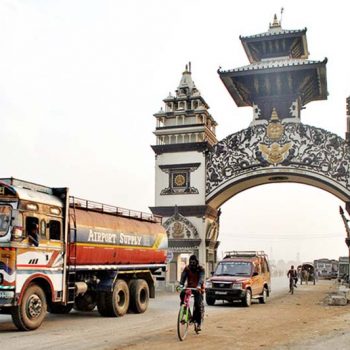‘Science diplomacy crucial for Sino-Nepal cooperation’: Beijing-based Nepali scientist
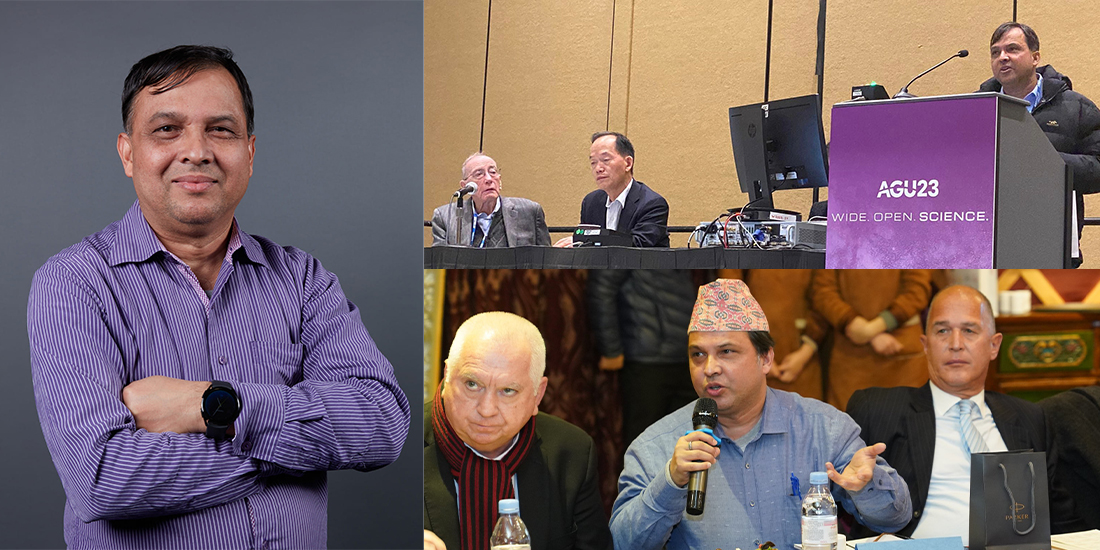
Dr. DB Kattel is one of the few Beijing-based Nepali scientists, associated with the Chinese Academy of Sciences. From science journalist to scientist, Kattel’s epic journey from Nepal’s remote hills of Bhojpur to the research halls of Beijing is a matter of attention as well as inspiration for many. In this extensive interview, Nepal Press’s Birat Anupam has inquired about Kattel’s personal and professional journey and the potential for science diplomacy between Nepal and China.
Let us start our talk with your academic journey from Asia to Europe and America. You accomplished your academic milestones until post-graduation in Nepal, pursued your PhD in China, and conducted post-doctoral research in Germany. You are now an Associate Professor at the Chinese Academy of Sciences, an ad-hoc committee member on Diversity and Inclusion of the UK-based International Glaciological Society, and a member of the American Geophysical Union based in the US. How did you manage to traverse such an exciting academic journey, starting from your school days in Nepal’s still underdeveloped district of Bhojpur?
Describing my journey from a remote village in Nepal to the world’s most advanced city, Beijing, in a single sentence is not easy. My determination, dedication, and hard work may have led to the establishment of this journey. I was born and raised in Dingla, a remote village in the Bhojpur District, located in the Arun Valley in the northeastern part of the country. The forests in my village and the surrounding areas in the Arun Valley are habitats for several hundred species of birds, animals, and plants.
At the bottom of my village, the Arun River, one of the largest rivers in Nepal that originates in Tibet (an autonomous region of China), continuously flows to the south. A beautiful view of the snowy Mount Makalu can be seen in the north. Witnessing this natural beauty every day sparked my love for nature and made me curious about its functions, processes, and interactions.
My primary and secondary schooling was completed at a local school in the village. Arun Madhyamik Vidyalaya (also known as Arun English Secondary High School) is still a popular school in Nepal’s mountainous districts in the eastern region. Although it is called English in its name, only one subject is taught in English out of seven.
I learned general English for the first time in Grade 5. Primary and lower secondary schools are located close to my house. However, I had to travel almost an hour to reach high school, which involved climbing a hill. Some friends had to travel for more than two hours daily.
It may be surprising these days, but during my school days, there was no electricity or transport in my village. To travel to Kathmandu, Nepal’s capital, we had to journey for almost two full days to catch a bus, and the journey took almost 14–16 hours to reach Kathmandu. Computers, the Internet, and any communication devices were beyond our imagination. This situation prevailed throughout the country.
I passed the SLC in the first division, so my journey began with higher education in Kathmandu. Science was my subject, but it was challenging to understand due to the vast gap between Nepali medium schooling and proficiency certificate-level science courses at Tribhuvan University.
My journey of writing science articles began in 1989, although I started writing poems earlier. My attraction to writing science articles may be associated with my curiosity. This involvement also kept me updated on the day-to-day changes and new advances in science and technology.
During the 1980s and 1990s, obtaining information on science and technology in Nepal was difficult. There were fewer media outlets than today. The collective impact of the above factors is pivotal in deepening my curiosity about science, technology, and the role of scientists in facilitating development.
Reading and writing have been ingrained in me since my early years. I focused on literary magazines and science outside of regular books during my college years and in my village school life. I want to credit my father because he has a collection of weekly, daily, and monthly newspaper magazines from the late 1970s and 1980s.
Literature, astronomy, evolution, biology, and climate are my areas of study interest, especially for writing popular science articles. I am deeply involved in climate science research. My research career began in 2009, although I completed my master’s degree in science in 1999.
Until I started my PhD, my work remained outside the scientific field. I have been deeply involved in the media, working in publications, radio, and television for a long time. For almost a decade, I have written several hundred popular science articles and produced radio and television programs related to news, current affairs, the environment, and science and technology.
The above activities continue to help me learn about recent advancements in science and technology. 2009 was the turning point in my academic career when I visited China for 45 days as a visiting scientist. I held a position at the Nepal Academy of Science and Technology (NAST) until 2009. Since I began my PhD research, everything has changed in my career.
You have published 25 plus research papers, and you have been cited over 3000 times worldwide. Could you kindly share your experience regarding this?
Publication is essential for anyone working in the field of science or research. The number of citations reflects the significance and value of the study. This shows the extent to which your research influences the scientific community or society. In 2009, when I started my PhD, my research journey formally began. During my PhD, I learned how to conduct research, particularly how to understand science. In 2012, my first research article was published in an international journal. Four research articles based on my PhD thesis have been published in international journals.
During my PhD study, I understood how to deal with scientific issues, solve problems, and make science usual in daily life. The findings of my PhD research are also included in the textbook. One article from the chapter of my PhD thesis has been replicated in various mountain systems in various parts of the world, including the Asian mountain region. My papers have been replicated or cited in various glacial, hydroclimatic, ecological, geological, paleoclimatological, and other fields. Therefore, it is the happiest moment for any scientist if the citations of their research papers have increased. I believe this is a great achievement for anyone working in scientific research.
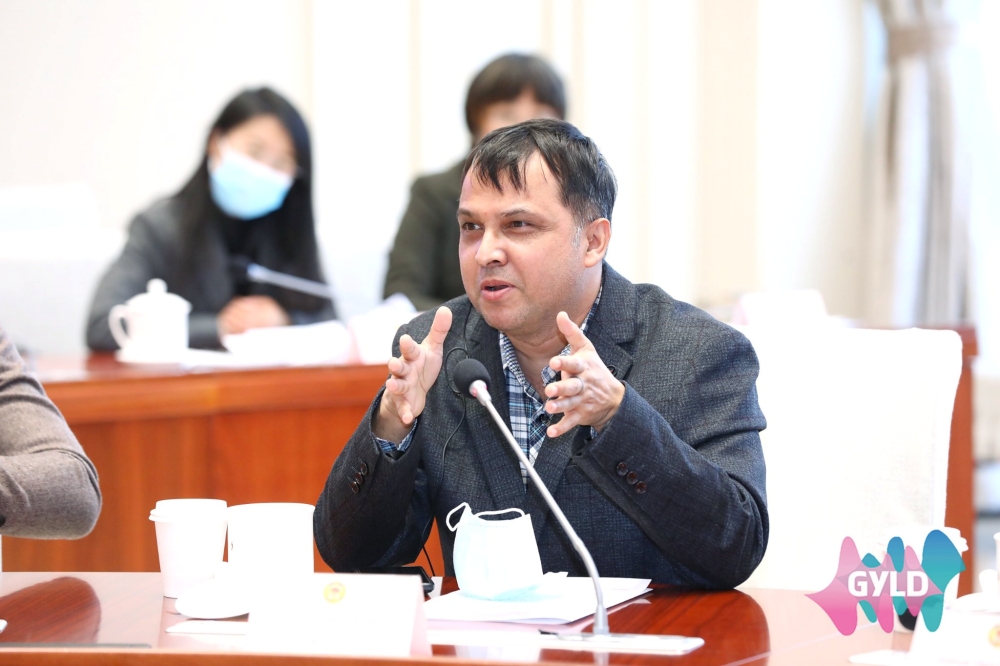 One of your research specializations is the Tibetan plateau. Your association with the Chinese Academy of Sciences is also linked with the Institute of Tibetan Plateau Research. Nepal is also part of this plateau. China has invested a lot in Tibetan plateau research. You have won a fellowship of around 700,000 RMB from China for the period of January 2023 to December 2024 for the same front. How did you grab that competitive fellowship with thousands of applicants from around the world?
One of your research specializations is the Tibetan plateau. Your association with the Chinese Academy of Sciences is also linked with the Institute of Tibetan Plateau Research. Nepal is also part of this plateau. China has invested a lot in Tibetan plateau research. You have won a fellowship of around 700,000 RMB from China for the period of January 2023 to December 2024 for the same front. How did you grab that competitive fellowship with thousands of applicants from around the world?
Understanding atmospheric science in mountainous systems is my research interest. Therefore, I am trying to understand climate systems, their characteristics, interactions, and processes for their variations with space and time in the mountainous region over the Third Pole. The institute where I work focuses on multidisciplinary research in various earth and environmental science areas in the Himalayas, Tibetan Plateau, and the regions surrounding the Third Pole. The Tibetan Plateau is a region of global importance that influences not only the regional or Asian climate system but also the Northern Hemisphere and the global climate system. Therefore, minor changes in the hydrological cycle in this region could have global implications.
This region is also a source of freshwater that supports the lives and livelihoods of billions of people living on the Asian continent. This region is known as the Water Tower of Asia because the cryosphere over the Third Pole is a reservoir of immense ice, snow, and glacial cover other than Antarctica. We are facing climate change issues in this region. China has made considerable progress in ecological and environmental protection in the Tibetan Plateau regions. Therefore, China’s research efforts in the Tibetan Plateau region are of immense value for protecting the regional climate system and global environmental protection. China’s investment benefits not only China but also neighboring countries, including Nepal, and global environmental protection.
It is difficult for any Chinese or foreign scientist to obtain a research grant from China’s National Natural Science Foundation. There are several challenging screening procedures that an applicant must undergo. The submitted proposal must always be on top of every screening procedure to be awarded the grant. Like the research paper we submit to the journal, no proposal is subject to revision. The proposal should be organized, the ideas should be innovative, the working methods should be feasible, and the potential results should benefit the research community, education, and society. My successful application could be an example of Nepali scientists who are also competent, similar to other scientists at the global level.
How is the Tibetan or Himalayan research scene in Nepal compared to China?
Rapid progress in research in this region has been observed over the last decade. Research has been conducted on high mountainous regions, particularly focusing on individual approaches in the Tibetan Plateau in the past. Various countries such as France, Germany, Italy, and Japan have contributed to glacier studies in Nepal, particularly during the 1980s and 1990s. Considerable changes in research in the Tibetan Plateau regions have been noticed in the past decade.
The institution I have been working in plays a crucial role in conducting multidisciplinary research across the Third Pole region. Therefore, China’s contribution to environmental protection in high mountain areas, especially in the Tibetan Plateau over the Third Pole region, has been remarkable in recent years. Compared with recent cooperation with China, Nepal has not had sufficient studies in the past for the high mountainous region, especially glacier studies.
Until 2000 or 2010, there was limited research in the climatic field. However, in recent years, the situation has changed dramatically. Many young, talented Nepalese researchers have been working or providing output in this field. Several hundred significant research papers have been published by them related to glacier-hydro-climatic and environment in recent years. The research cooperation between Nepal and China for joint study in this region is now appreciated.
Is Chinese research on the Tibetan plateau helpful for the Nepali side of the Himalayas?
We have been researching the high mountainous regions surrounding the Third Pole, a region of global importance. As I previously mentioned, the findings from this research will not only benefit Nepal but also have regional and global implications. Nepal has benefited in several ways from this research, including the joint academic research cooperation with China on common issues we have conducted in the past decade.
The cooperation has resulted in several significant outcomes, including opportunities for Nepalese scientists and students to share knowledge and information, joint research activities, academic exchanges, capacity building, and post-doctoral research. These activities benefit Nepal and contribute to global environmental protection, as they involve multi-aspect research in the Tibetan Plateau regions. It is worth mentioning that Nepalese scholars have already published over 200 scientific papers in high-level international journals, which can contribute to science and technological development in Nepal.
You have taught in Pakistan also as an international professor. How their research on the Himalayas as Pakistan is also a part of a Himalayan range of Asia, including some of the tallest peaks on the planet?
The high mountain region of Pakistan lies in and around the Karakoram Mountains and borders the Himalayas to the east and the Hindu Kush to the west. Research on the glacial hydro-climate system in the cryosphere over the Karakoram Mountain ranges is increasing. University-level hydrometeorological studies in Pakistan are quite new compared to Nepal. So, Nepal has been the subject of extensive scientific research for high mountain studies, resulting in many publications on the southern slopes of the central Himalayan regions compared to the surroundings, except the northern parts of the Himalayas. Research activities in this region have been considered significant over the last decade. The glacio-hydro-climatic studies in Pakistan have also seen considerable growth in recent years.
You are among a few academics from Nepal who have met the Chinese Prime Minister based on your academic standing. On February 2, 2021, you met Chinese PM Li Keqiang, one of the 25 prestigious young foreign scientists. How was the meet-up?
Growing up in a remote village in Nepal with no development, electricity, or transportation, it was a wonderful moment for me to study and work in one of the most advanced cities (Beijing, China) and the top academia in the world. It was a historic moment for me to interact with the Prime Minister of China on February 2, 2021. This opportunity is a moment of gratitude for me because I came from a village government school background and had to work hard to make the journey to Beijing for advanced study and work. The Diplomates, high-level government authorities, or ministerial level to meet the Premier could be a usual practice. Still, as a simple Nepalese citizen, this could be a wonderful opportunity. This is also an example of how leaders respect, encourage, and thank the experts and scientists for their contribution.
Fortunately, I also shared our cooperation work in Nepal and China, especially glacier-hydro-climatic research, over the Third Pole region on that occasion. Promptly, I received his response, and he shared the Chinese future priority on research and environmental protection in the cryosphere region. Another wonderful moment I will never forget was his pleasant attention to my nation. When he returned after the symposium, he looked at me and said “Nepal” with a smile; after a few steps, he again looked at me and said “Nepal.” I remembered he repeated it three times. It is sad news to hear that the former Premier of the People’s Republic of China, Li Keqiang, died on October 27, 2023. We lost a great, well-wisher personality to Nepal.
Before your instinct at the Chinese Academy of Sciences, you were part of the Nepal Academy of Science and Technology. Did you get a PM-level invitation for dialogue and discourse like Chinese PM Li Keqiang did?
I haven’t observed a specific network in Nepal that fosters relationships between the government and scientific experts. If such a practice exists, it would aid Nepal’s scientific and technological progress. Unfortunately, many experts seem more focused on personal gain and political allegiance than on contributing to the country’s development. True professionals dedicated to advancing Nepal’s science and technology often go unnoticed. While many scientific researchers work abroad, their contributions to Nepal’s development are often overlooked.
From the Nepali point of view, you represent Nepal in the Chinese Academy of Sciences. This is a rare occasion. However, when it comes to history, Nepali has made some remarkable academic and artistic impressions in China. For example, in the fifth century, Nepali monk Buddhabhadra, at the invitation of famed Chinese monk traveler Faxian, traveled to China to help translate Buddhist and Sanskrit literature based in Nanjing. In the 13th century, Araniko arrived in Beijing and erected a White Pagoda at the heart of Beijing. How do you compare this past with the present scenarios of Sino-Nepali academic and artistic exchanges?
Although the two countries signed the first Sino-Nepal Treaty of Peace and Friendship on April 28, 1960, the cultural relationship between Nepal and China is centuries old. They have always been friendly and marked by mutual respect, understanding, and support. You are right! The Nepali monk and scholar Buddhabhadra served as the primary illustration of cultural exchange, as he translated Buddhist texts from “Sanskrit” to Chinese in the fifth century. Around 600–650 CE, the Nepalese Princess Bhrikuti married Songtsan Gampo, the earliest known Emperor of Tibet, an autonomous region of China. Ancient Nepalese architect and chemist Araniko was invited to China approximately 762 years ago (in 1260 CE) to design and build the Golden Stupa in Tibet. He was assigned to North China to live in the court of Kublai Khan, the founder of the Yunan Dynasty, where he disseminated trans-Himalayan artistic tradition to China. He built a stupa, popularly known as the White Dagoba, in the heart of Beijing. Araniko was the foremost expert invited to work in China and should have been the first technological cooperation between Nepal and China.
In this modern era, science and technology have become crucial. China has been offering scholarships to Nepalese students for several decades, with hundreds of students from Nepal going to China for undergraduate or postgraduate studies. However, high-level scientific cooperation between Nepal and China only began in 2009 with the initiating of the Third Pole Environment (TPE) program. The TPE program, supported by the Chinese Academy of Sciences, addresses common issues, shares recent progress with the global scientific community, and supports regional scientific and technological research in the Himalayas, Tibetan Plateau, and surrounding areas. The establishment of the TPE Kathmandu Center, KCRE, and the increasing number of Nepalese students studying in China reflect the growing academic cooperation between the two countries. High-level scientists from both countries have been collaborating on common issues, resulting in several hundred research papers contributing to the region’s scientific and technological progress and sustainable development. I am delighted to be here, where the Araniko built cultural heritage and established a strong cultural, scientific, and technological bond between Nepal and China several hundred years ago.
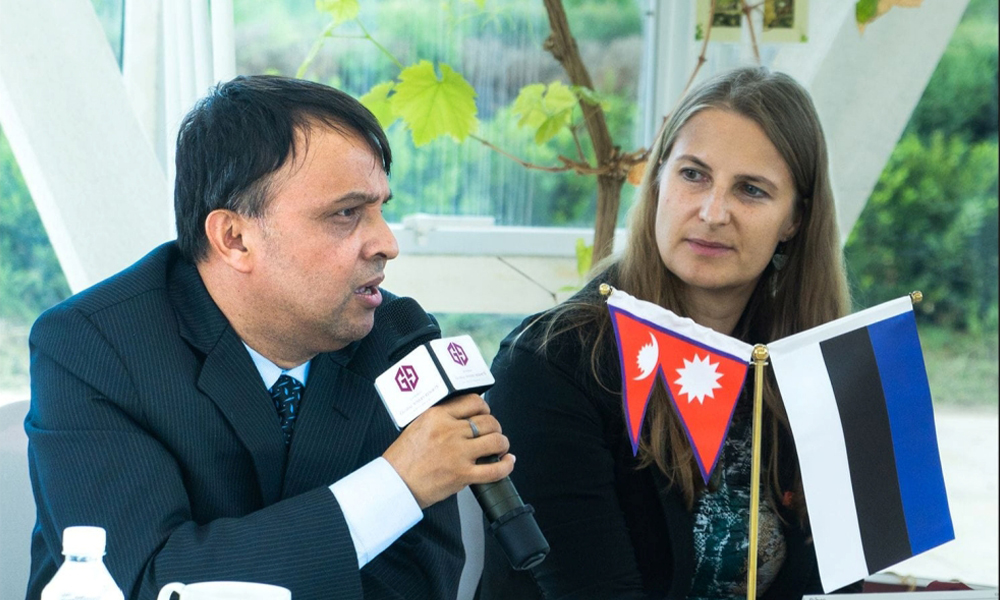
You are also an experienced science communicator or science journalist, as you have been associated with print and broadcasting media outlets in Nepal for science journalism. What are the similarities and differences between science communication and science journalism between Nepal and China? Can you answer this as you are good at Mandarin also?
Effective science communication and journalism can significantly contribute to the development process of science and technology in the Nation. Science communication contributes to science literature via articles and features writing and attracts readers to science, while science journalism shares new achievements and updates with the public. Professionalism and prioritization of science communication and journalism, coupled with media encouragement of science writers and journalists, are vital for communicating recent advancements and findings and fostering public interest in the study and writing of science by emphasizing its value for national progress. In Nepal, science and technology communication still lacks professionalism and mainstream coverage, besides occasionally giving some priority to some specific content. Therefore, science, communication, and journalism practice are similar almost everywhere. The role of science writers and reporters has been emphasized as crucial for developing science and technology in the nation. The writer or journalists are also involved in fruitful reporting, and the mainstream media also gives significant attention and priority to science and technology reporting. However, in Nepal, such practices are still not in progress, excluding the contribution of a limited number of science writers and journalists.
China has invested a lot in science and technology. For example, recently, China unveiled a plan to encourage young scientists for more leading roles. China’s Ministry of Science data shows that from 2012 to 2021, China produced 450,000 doctorate graduates and 20,000 in post-doctoral research. Besides this domestic encouragement, China is encouraging overseas Chinese for more innovations. Recently, the Overseas Chinese concluded the 11th National Congress on September 3 in Beijing. They have committed to work as a link for China’s prosperity. China’s first domestically produced jetliner, C919, involved a returnee Chinese Qian Zhongyan. How can Nepal, with its limited resources, copy a similar template for national development?
It is a bitter truth that Nepal lags far behind in scientific and technological development compared to neighboring countries. The government has not allocated adequate resources, formulated policies, or developed infrastructure for scientific and technological advancements in Nepal. Owing to the inadequate environment and infrastructure for scientific and technological research in Nepal, a large proportion of qualified scientific professionals are lured to work abroad. Still, a clear long-term plan or strategy remains uncertain, and the direction we need to move forward. Nepal can develop or implement policies and programs that support young scientists and researchers by initiating investments in education and research. This could include providing funding, scholarships, research grants, and opportunities for international collaboration. Encouraging young scientists working in Nepal and abroad is therefore crucial.
Nepal can also engage in its diaspora more effectively. Many Nepalese scientists have been working or studying abroad to acquire valuable skills and experience. They could be encouraged to contribute to Nepal’s development by returning to Nepal or through remote collaboration. Besides commitments, long-term strategies and a platform must be developed to provide an environment to attract Nepalese scientists working abroad to come back or work together. There might be several indigenous knowledge or technologies in Nepal that could be identified and promoted. Infrastructure can also be developed using available resources. Nepal is rich in natural resources, the most important of which are water resources for hydroelectricity, biodiversity for the medical plan, climatic diversity to attract the global scientific community for research, and many others that can be utilized.
Our land and climate are suitable for cultivation. Focusing on agricultural development could be crucial to Nepal’s economic development. Most of Nepal’s population depends on agriculture; thus, we can revolutionize the country’s agricultural development. We can increase productivity and can share our production with the global community. Likewise, Nepal could seek to attract foreign investment and establish international cooperation to provide the necessary capital, technology, and expertise for development.
China has its own space station. It has been said to make more space for collaboration in bilateral and multilateral forums. Recently, China’s space station hosted painting exhibitions from African artists. How can Nepal and Nepali be a part of China’s space program and science diplomacy?
The space program agenda might be too ambitious, as I have already mentioned that Nepal is far behind in scientific and technological infrastructure. Like African artists’ painting exhibitions on the Chinese space station, Nepalese artists could do the same, especially to enhance Nepal-China scientific and technological cooperation. In this era of the 21st century, science and technology come in front; therefore, the role of science diplomacy is crucial for the cooperation between two countries.
It is also a bitter truth that we still do not have a clear science diplomacy policy to benefit from neighboring countries’ progress. Therefore, Nepal should prioritize strengthening science diplomacy as essential to foreign policy. This includes developing relationships between nations through joint research cooperation and development, innovation, and academic partnerships. Nepal could seek China’s assistance in building our scientific and technological capacity, including training for Nepalese scientists and technicians.
Under science diplomacy, Nepal could negotiate technology transfer agreements with China to help it acquire the advanced technologies it currently lacks. Participation in multilateral forums could provide opportunities for collaboration and exchange of ideas. China is currently becoming a global hub for research and education. Therefore, Nepalese students and professionals should be encouraged to pursue educational and training opportunities in China. This could help build a pool of skilled professionals in Nepal who can contribute to the country’s scientific and technological development.
Nepal could seek to participate in China’s science and technology programs, such as Belt and Road initiatives and other programs, which could provide opportunities for collaboration and exchange of ideas. Nepal could engage in its diaspora in China through its science diplomacy efforts. These individuals could serve as bridges between the two countries, facilitating collaboration and exchanges like mine. Nepal can use science diplomacy to promote its achievements in science and technology in China, attracting Chinese investment and collaboration. To achieve this, we must identify and prioritize the areas we can include as the main agenda in our science diplomacy.
China is making monumental progress in economic and scientific domains. Does it have some sort of automatic spillover impact in Nepal for the same?
Science and technological advancement are the major aspects of China’s economic progress. China’s significant progress in the economic and scientific domain has potential impacts on Nepal, but it is not necessarily an automatic spillover. It all depends on the country’s role and participation. China’s advancements could influence Nepal. For example, investment from China to Nepal could stimulate economic growth and technological advancement. There are several examples of China’s involvement in various infrastructure projects in Nepal, such as hydropower, construction of roads, buildings, and airports. These projects improve Nepal’s infrastructure and potentially transfer technology and expertise.
The other important parts are education and research. China’s emphasis on education and research could inspire similar initiatives in Nepal. Collaborations between Chinese and Nepalese universities could facilitate knowledge and technology transfer. The Belt and Road Initiative is an important program that aims to boost economic development across Asia through infrastructure development and investments. This could bring significant economic, scientific, and technological benefits to Nepal. However, these impacts are not automatic. All depend on the nature of the bilateral relationship, the specific sectors targeted by cooperation, and our capacity to absorb and utilize the incoming sources and knowledge. Next, it all depends on our interest and commitment.
Is there anything you want to add that is not asked above?
China’s development progress is indeed noteworthy. As the world’s second-largest economy, China is eager to share its economic prowess, technological advancements, and experiences with the global scientific community. The Belt and Road Initiative (BRI), a highly beneficial cooperation project initiated by the Chinese Government, aims to foster regional and global cooperation. This initiative addresses common issues, promotes scientific exchanges, and bolsters peace and sustainable development.
Being the second largest economy offers numerous opportunities. China boasts substantial funding resources, well-equipped laboratories, well-research environments, and a wealth of expertise for research, science, and technological cooperation. Various funding and scholarship opportunities are available for foreign talents and scholars, making China an attractive destination compared to other developing or developed countries.
The benefits of this initiative are not limited to developing countries; the global scientific community stands to gain from the advancements in scientific and technological research. This collaboration, based on mutual trust and understanding, promises to yield benefits in various ways in the future. Scientists from many nations, including Nepal, can learn from China’s rapid progress and leverage its development. Furthermore, the younger generation can grab the opportunities China provides to acquire knowledge and enhance their academic skills.
